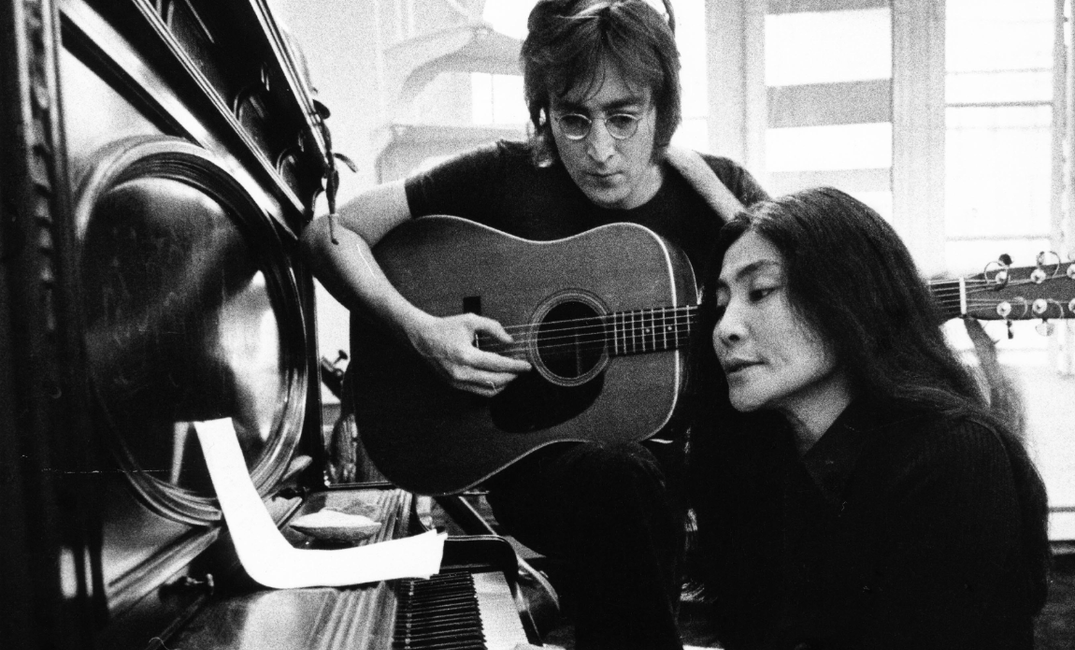A recent spate of documentary projects on the Beatles and its members suggests that 50 years had to pass before we could address them as artists rather than icons.
I missed Beatlemania in real time but fell in love with their music post break-up. Growing up, I attended Beatles conventions, read Beatles books, and consumed all the Beatles-related media I could find. This work rarely examined their artistry and influence in depth. I mainly learned that the band was a cultural force with musicians that were each larger-than-life icons. We get a closer look at their creative work in recent cinema:
The superlative Get Back by Peter Jackson highlights the collaborative process that birthed the Let It Be album, while the astounding McCartney 3,2,1 shows producer Rick Rubin and Paul McCartney exploring the musical choices and inspirations behind specific McCartney compositions. This Thursday, SFFILM will screen another entrant into this widening arena of Beatles documentaries on the opening night of their Doc Stories program, One to One: John and Yoko.


One to One is directed by Kevin Macdonald and edited by Sam Rice-Edwards. McDonald is a seasoned filmmaker, with films on Whitney Houston, Bob Marley, and Mick Jagger, as well as the Academy Award winning documentary One Day in September (1999).
In One to One, Macdonald and Rice-Edwards recreate the world John and Yoko inhabited over an 18-month period in 1971–1972 following the Beatles’ breakup. Their film is a portrait of two artist-activists who aimed to influence their politically turbulent times before eventually retreating to a more domestically quiet life (skipping over their temporary separation in 1973–1974).
I liked how One to One changed up the approach to concert films. While most focus on the spectacle of the show, the star power of the performers, and backstage moments, One to One instead treats the concert as a portal into John and Yoko’s musical, personal, and political milieu. It gave me a broader frame for considering how these facets of their life interconnected.

Musically, the film revolves around the last full concert performance Lennon ever gave. We see clips from this benefit concert staged in Madison Square Garden in August of 1972, with Ono often performing alongside Lennon. Then in their lives, we follow John and Yoko as they emigrate to New York City, move into a small loft apartment, take up with activists and countercultural figures like Jerry Rubin and Allen Ginsburg, plead for reconnection with her young daughter, fight potential deportation, and undergo primal scream therapy.
Politically, they leverage their celebrity to publicize countercultural views, generate media attention, and apply pressure on the powers that be. They advocate for the release from jail of writers John Sinclair or Angela Davis, criticize the government’s response to the Attica State Prison uprising of 1971, and plan a tour designed to serve as a musical liberation front for social change.


One to One is also a documentary for a hyperlinked generation, with its rapid flow of evocatively edited sound and image. Macdonald and Edwards compile archival footage from many sources, including concert footage, news reports, television talk shows, radio interviews, and advertisements, along with the personal home movies and recorded phone calls of John and Yoko. The archival materials add context to the politically topical songs performed in concert, many of which appeared on the album, Some Time in New York City (1972). This footage helps explain the people and events referenced in these songs.
The editing often juxtaposes clips from the news and entertainment media of the time, placing footage of Attica State next to the Sonny and Cher Comedy Hour or the Vietnam War next to jubilant ads for coke or calculators. This counterpunctual editing recreates the 1970s media environment, suggesting irreconcilable rifts between mainstream America and the counterculture, and conveying the chaotic and divisive mood of the times.

Not surprisingly, the film also asks viewers to reconsider public perceptions of Yoko Ono, who was probably the most vilified woman in rock and roll in the 1970s. Yoko describes the vitriol she faced in England when the Beatles broke up and efforts to sideline her as a woman and artist. But Lennon regarded her as an artistic equal during their life together, and that relationship is evident.
One to One offers a tonic for public perceptions of John and Yoko in the early 1970s, some influenced by Jan Wenner’s (of Rolling Stone magazine) book Lennon Remembers and The National Lampoon’s Lennon parody, Magical Misery Tour. The film gives us a deeper and more complex context for the concert, their music, and their work as artists and activists at a transitional moment.
// One to One: John and Yoko screens at 7p.m. at Vogue Theatre. Director Kevin Macdonald is expected to attend. SFFILM Doc Stories runs from Oct 17–20. https://sffilm.org/event/one-to-one-john-yoko/
Laura Stein is a San Francisco-based writer.
The Bold Italic is a non-profit media organization that’s brought to you by GrowSF, and we publish first-person perspectives about San Francisco and the Bay Area. Donate to us today.







